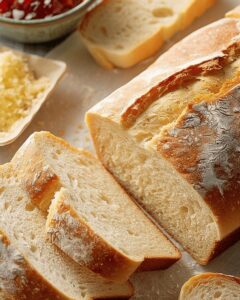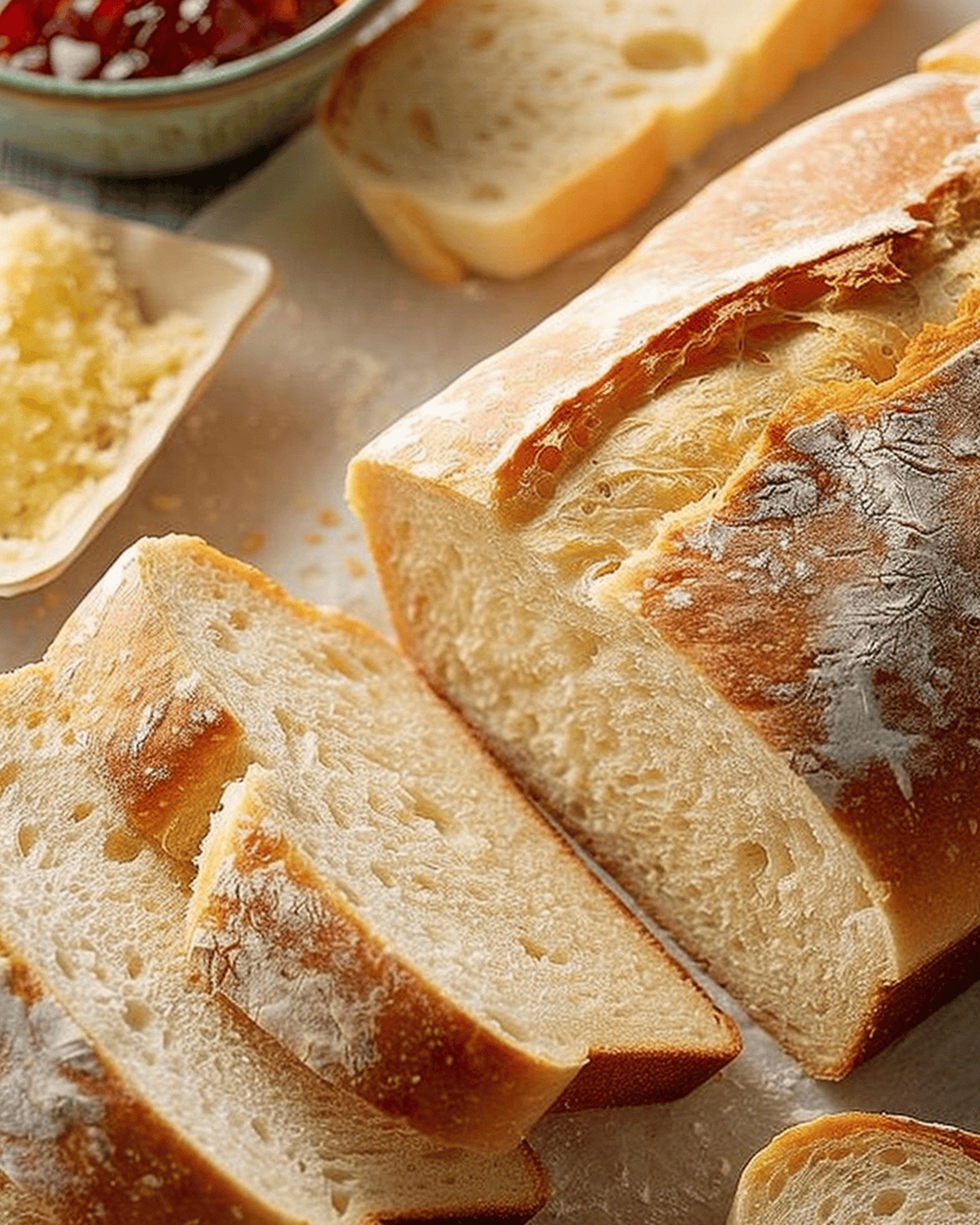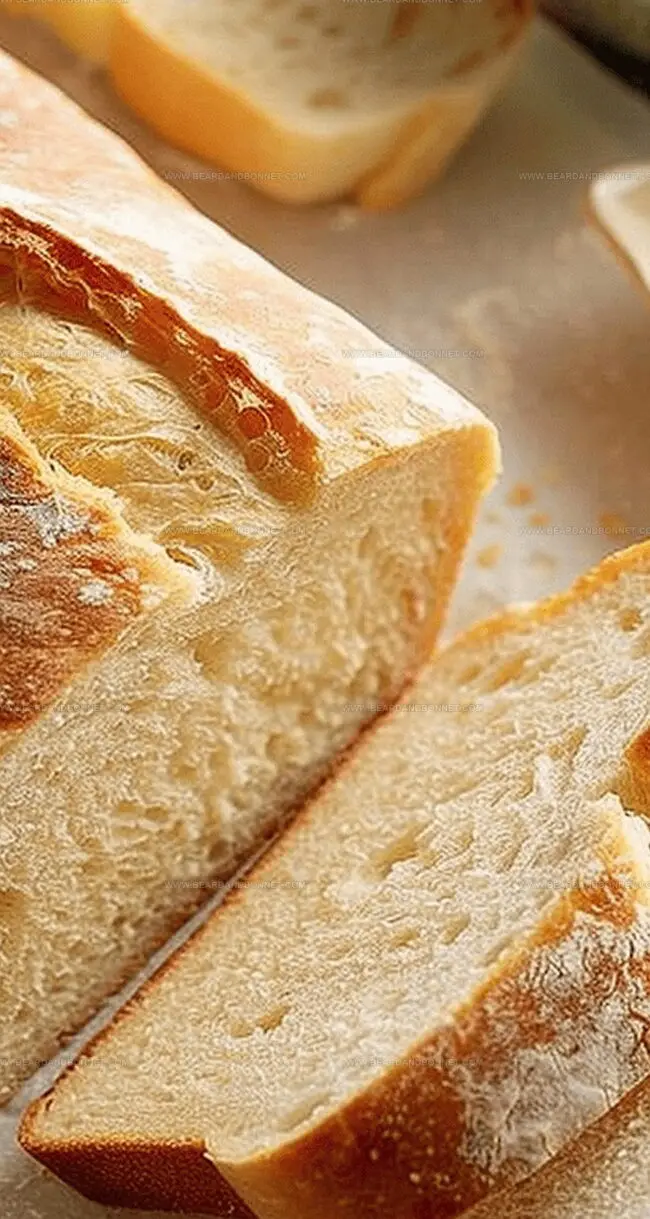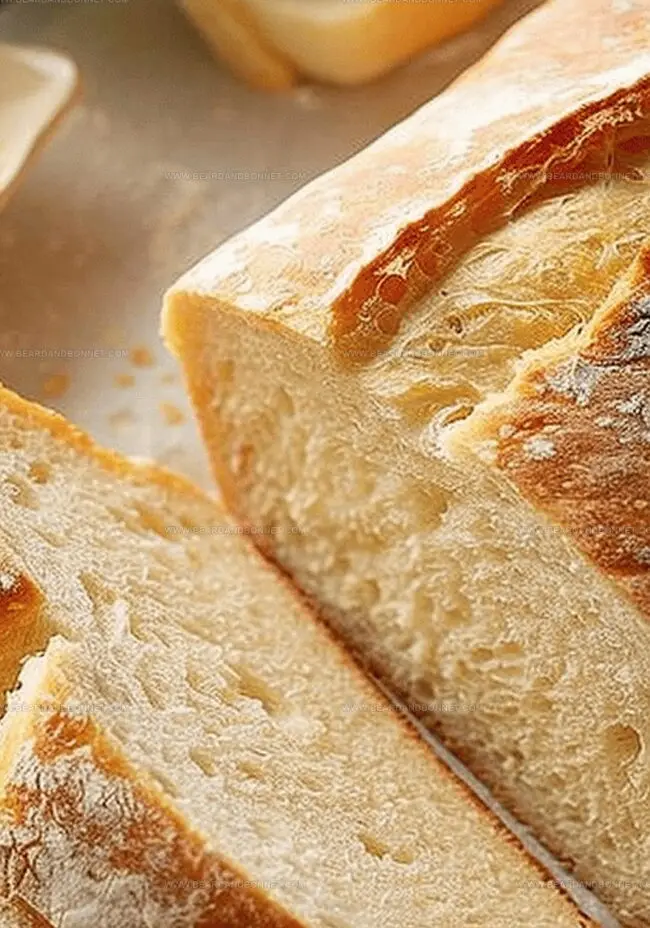Fluffy Homemade Bread Recipe: Bake Joy in Every Slice
Crafting homemade bread refines ordinary kitchens into aromatic sanctuaries of warmth and comfort.
Baking this staple connects generations through a timeless culinary art that transcends cultural boundaries.
Soft, golden loaves emerge from ovens with promises of delectable satisfaction and nostalgic memories.
Each kneading motion tells a story of patience and skill, inviting sensory experiences that store-bought alternatives cannot replicate.
Simple ingredients dance together, creating magic through chemical reactions and careful technique.
Mastering bread-making requires understanding fundamental principles of flour, yeast, and temperature interactions.
Home bakers develop intuitive skills that elevate their confidence with every successful batch.
Your next kitchen adventure awaits a delicious journey of bread-making prowess.
What’s So Satisfying About Homemade Bread
Must-Have Ingredients for a Warm, Soft Bread Loaf
Main Ingredients:
Bread Flour:- Bread Flour: High-protein wheat flour that gives bread its structure and chewy texture, with strong gluten development for perfect rise and crumb.
Water:- Warm Water: Essential liquid that activates yeast and helps develop gluten, needs to be at precise temperature for optimal yeast performance.
Leavening Agents:
Yeast and Sugar:- Active Dry Yeast, Sugar: Yeast feeds on sugar to create carbon dioxide, helping bread rise and develop rich, complex flavor with slight sweetness.
Oil and Seasoning:
Flavor Enhancers:- Canola Oil, Salt: Oil adds moisture and softness to bread, while salt enhances flavor and controls yeast growth, creating balanced taste and texture.
How to Bake Fresh Bread That’s Golden and Soft
Step 1: Awaken the Yeast
Create magic by mixing yeast with warm water in a spacious bowl. Sprinkle a touch of sugar and watch bubbles dance across the surface. Let the mixture sit and come alive for 10 magical minutes.
Step 2: Blend Dry Ingredients
Grab another bowl and whisk together:Combine these ingredients until they become best friends.
Step 3: Merge Liquid and Dry Worlds
Pour canola oil into the yeast mixture. Slowly combine with dry ingredients, stirring until the batter becomes smooth and velvety.
Step 4: Craft the Dough
Add remaining flour gradually, mixing until the dough feels soft and responsive. Work the mixture until it becomes elastic and cooperative.
Step 5: Knead with Passion
Transfer dough to a flour-dusted surface. Use your hands to massage and stretch the dough for 8 minutes. This transforms the mixture into a smooth, supple texture.
Step 6: First Rising Adventure
Place dough in a greased bowl, coating all surfaces. Cover with a clean kitchen towel. Let it rest in a warm corner of your kitchen for 1-2 hours until the dough doubles in size.
Step 7: Shape Your Bread
Gently deflate the risen dough. Divide into two equal portions. Carefully shape each section into a loaf and nestle them into greased 9×5 inch pans.
Step 8: Final Rise and Bake
Allow loaves to rise again for 45 minutes. Preheat oven to 375°F. Bake for 30-35 minutes until golden brown. Bread should sound hollow when tapped.
Step 9: Cool and Enjoy
Remove bread from pans and let cool on wire racks. Slice, serve, and savor your homemade creation!
Bread Baking Tips for the Perfect Crust and Crumb
Smart Ways to Store and Refresh Homemade Bread
What Pairs Well with Warm, Homemade Bread
Homemade Bread Variations to Try with New Flavors
Print
Homemade Bread Recipe
- Total Time: 45 minutes
- Yield: 12 1x
Description
Rustic homemade bread brings warmth and comfort straight from your kitchen. Kneaded with love and baked to golden perfection, this simple recipe connects you to generations of traditional baking.
Ingredients
Dry Ingredients:
- 6–¼ to 6-¾ cups bread flour
- 1 package (¼ ounce/7 grams) active dry yeast
- 3 tablespoons plus ½ teaspoon sugar
- 1 tablespoon salt
Liquid Ingredients:
- 2–¼ cups (532 milliliters) warm water (110° to 115°F)
- 2 tablespoons (30 milliliters) canola oil
Instructions
- Awaken the yeast microorganisms by blending them with a touch of sugar in tepid water. Allow the mixture to transform, creating a frothy surface that indicates active fermentation, typically within 5-10 minutes.
- In a separate vessel, thoroughly combine the remaining sugar, salt, and a portion of the flour using a whisk, creating a uniform dry mixture.
- Integrate the canola oil into the bubbling yeast liquid, then pour this vibrant mixture into the flour blend. Whisk energetically until the components merge into a cohesive, smooth consistency.
- Methodically incorporate the remaining flour, adding incremental amounts to develop a supple, pliable dough. Continue mixing until the texture becomes smooth and demonstrates excellent elasticity.
- Transfer the nascent dough onto a lightly dusted work surface. Knead the mixture with rhythmic, pressing motions, developing gluten structure and achieving a silky, responsive texture.
- Nestle the dough into a generously greased container, rotating once to ensure complete surface coverage. Drape a soft cloth over the bowl, then position in a warm, draft-free environment to encourage expansion until the volume doubles.
- Deflate the risen dough with a decisive punch. Partition the mass into two equal segments on a floured surface. Gently shape each portion into a streamlined loaf, positioning them carefully in prepared baking vessels. Allow a secondary rise until the dough significantly increases in volume.
- Ignite the oven to 375°F. Bake the loaves until they transform into a rich, golden-brown hue and emit a hollow percussion when gently tapped. Immediately extract from baking pans and transfer to cooling racks, allowing residual heat to complete the final transformation.
Notes
- Bread-making transforms simple ingredients into a magical culinary journey of warmth and comfort.
- Patience becomes your secret weapon when crafting homemade bread, turning basic flour and yeast into golden, aromatic loaves.
- Mastering this recipe requires gentle handling, understanding ingredient interactions, and embracing the rhythmic process of kneading and rising.
- Prep Time: 10 minutes
- Cook Time: 35 minutes
- Category: Breakfast, Snacks, Dinner
- Method: Baking
- Cuisine: Global
Nutrition
- Serving Size: 12
- Calories: 150
- Sugar: 1.25 g
- Sodium: 200 mg
- Fat: 2 g
- Saturated Fat: 0 g
- Unsaturated Fat: 2 g
- Trans Fat: 0 g
- Carbohydrates: 28 g
- Fiber: 1 g
- Protein: 4 g
- Cholesterol: 0 mg




Alex Reed
Founder & Lead Content Writer
Expertise
Recipe Development and Testing, Culinary Education, Food Writing and Blogging, Sustainable Cooking Practices, Global Cuisine Exploration
Education
Johnson & Wales University
Le Cordon Bleu Paris
Alex Reed is an inventive chef and food creator with a passion for dishes that balance taste, health, and sustainability.
Trained at Portland Community College and holding an Advanced Pastry Arts certificate from Oregon Culinary Institute, Alex brings more than 10 years of practical culinary experience to every recipe he develops.
His background uniquely blends traditional cooking skills with modern, mindful eating principles. As the founder of Beard and Bonnet, Alex creates recipes that encourage readers to cook confidently.